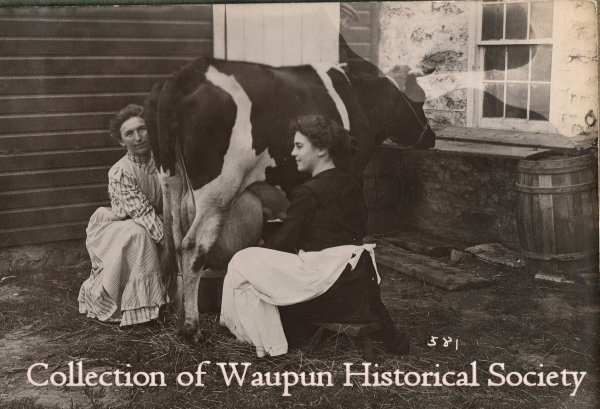Harvesting Giant Produce
Johnson’s scenes demonstrate the cycle of farm and garden production
and all the complications of dealing with enormity and abundance.
The planting and growing part of the process is done and the next
steps involve moving it, using it, transporting it, storing it or
marketing it. Johnson takes each step
to its humorous conclusion.
Kkohlrabi
(1913),
Red Raspberries
(1912),
Black Raspberries
(1913,
Digging Aspargus
(sp.) (1910),and
Carrots
(1912) all represent produce at the point of harvest.

 |
|
In Carrots, I believe that the woman and child on the right
are Johnson’s wife, Myrtie Ihde, and their son Alfie who would have
been this age in 1912. They appear in other cards as well. |
 |
|
Digging Aspargus (sp) (1910): |
 |
|
Black Raspberries (1912): While Johnson has
posed the man in a position to imply movement, the immobile
dog gives it away. |
 |
|
Cutting Cabbage (1909) |
 |
Milking Time (1911) (No. 582)
For lack of a better subject category to include this, I am
putting it in with the harvest cards. This card was part of
the Johnson collection at the Waupun HIstorical Society. The
title was copyrighted, but whether it ever actually went to
market, I don't know. We are not aware of any ever having
been seen.
Notice the barely visible man peeking out from behind the
door. No. 581 is the same scene but with some damage
possibly through developing. These demonstrate that Johnson
had to take multiple poses to get the right scene for
further processing. |
 |







